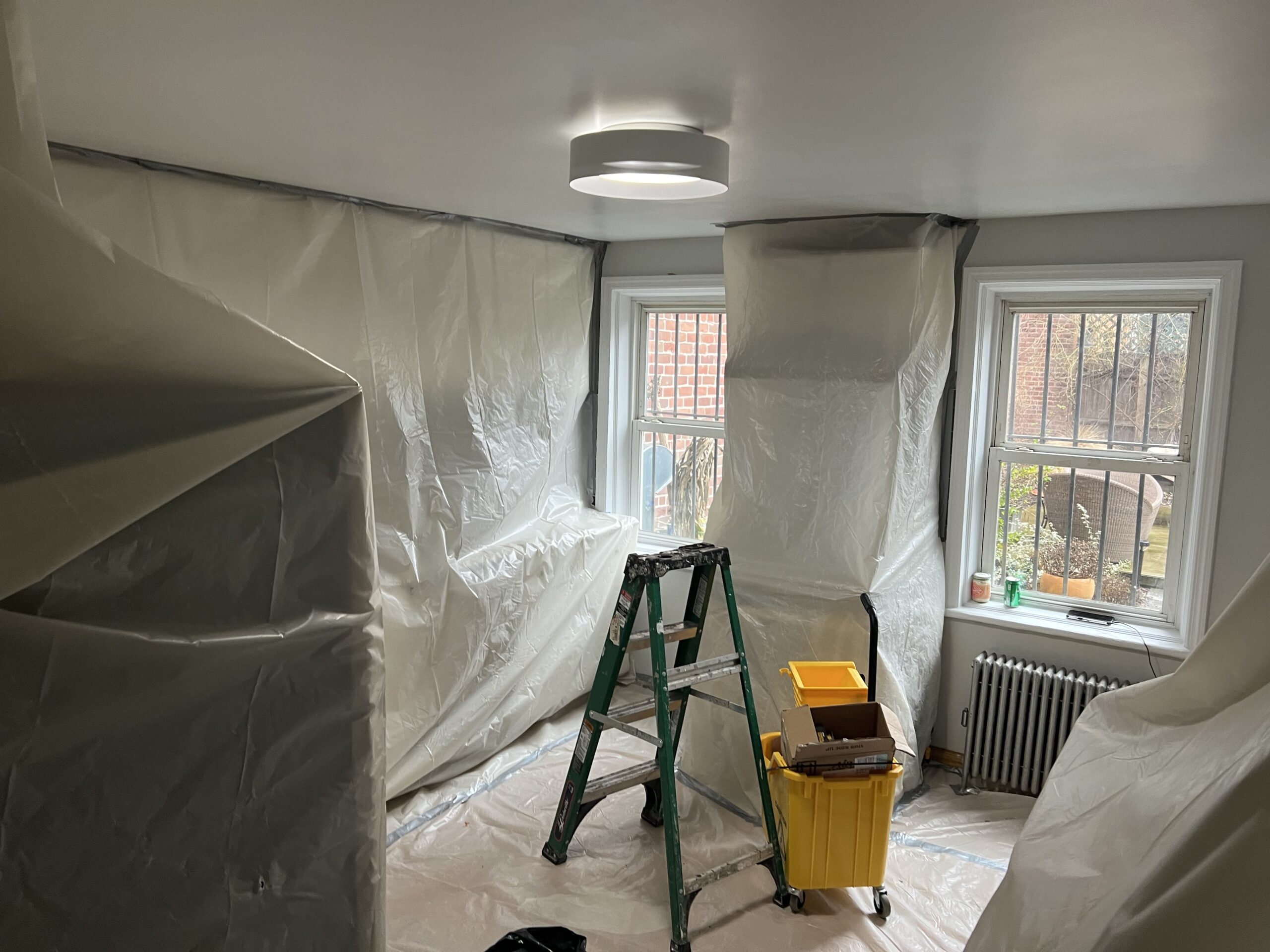NYC Lead Removal Contractors-- Get Safe and Efficient Providers
NYC Lead Removal Contractors-- Get Safe and Efficient Providers
Blog Article
Best Practices for Making Certain Safe and Extensive Lead Offense Abatement
Dealing with lead infraction abatement calls for a multi-faceted technique to ensure both security and compliance. It's the final clearance process, involving thorough examinations and lab screening, that truly validates a lead-free setting, making sure long-lasting security. How do these techniques interconnect to guarantee thorough lead reduction?

First Evaluation
Conducting a first evaluation is an important very first step in lead infraction abatement. This stage encompasses a thorough analysis of the residential or commercial property to recognize the existence, extent, and specific locations of lead-based threats. Qualified specialists, such as licensed lead inspectors or run the risk of assessors, should do an extensive website evaluation, making use of devices like X-ray fluorescence (XRF) analyzers to precisely detect and determine lead focus in paint, dust, dirt, and water.
The assessment needs to additionally include a testimonial of the building's history, previous records, and any issues or health problems reported by occupants - Lead Removal Contractors. Documenting the findings diligently is important, as these documents create the basis for developing a reliable abatement method. A comprehensive analysis additionally involves sampling and lab evaluation, which are crucial to verify the visibility of lead and overview succeeding actions
Moreover, it is essential to interact the outcomes transparently to all stakeholders, consisting of residential or commercial property owners, occupants, and governing authorities. By making certain that the initial assessment is conducted with precision and rigor, experts can lay a strong structure for a targeted and effective lead reduction procedure, eventually securing public wellness and making certain conformity with regulative criteria.
Correct Control
Proper control is critical to stop the spread of lead pollutants during abatement tasks. Successfully managing control lessens the risk of lead dirt and debris moving to non-work areas, thereby safeguarding both the atmosphere and individuals outside the prompt work area.

Regular examinations of the containment location are needed to check for violations or weaknesses in the barrier. Any kind of determined issues must be promptly resolved to maintain the honesty of the containment. By adhering to these techniques, abatement tasks can efficiently regulate lead contamination and mitigate connected health dangers.
Employee Protection
Making sure employee protection is extremely important during lead abatement projects to avoid work-related direct exposure to dangerous lead bits. Necessary measures include using individual protective devices (PPE) such as respirators, handwear covers, and full-body matches particularly made to block lead dust and fumes. Workers ought to undertake comprehensive training on the appropriate usage and upkeep of PPE, consisting of healthy testing for respirators to guarantee maximum effectiveness.
Design controls, such as neighborhood exhaust air flow systems, are essential in view lessening air-borne lead focus in the job setting. Administrative controls should also be executed, including limiting the duration of exposure and turning workers to minimize specific direct exposure times. Normal clinical surveillance and biological monitoring are essential for early detection of lead absorption, enabling timely intervention and therapy.
In addition, developing a purification method is essential. Workers need to follow strict purification treatments before breaks and at the end of their change to stop lead dust from being brought outside the work area. This includes detailed hand and face cleaning with lead-specific cleaner and altering out of contaminated clothing.
Thorough Cleanup
Preserving a risk-free work environment expands past worker protection and incorporates careful clean-up to ensure lead fragments are thoroughly removed from the website. The process of meticulous cleaning is essential in stopping the recontamination of the eased off area and guarding both present and future occupants.
To attain a detailed cleanup, all workplace should be systematically decontaminated. This involves using specialized HEPA (High-Efficiency Particulate Air) vacuum cleaner cleansers and wet-wiping methods to capture and eliminate fine lead dirt that might have chosen surfaces. It is vital to cleanse all horizontal surface areas, including floorings, home window sills, and counter tops, along with vertical surfaces that might have trapped lead fragments.
Workers need to put on suitable individual protective devices (PPE) throughout cleanup to prevent direct exposure to residual lead dirt. Utilized cleansing products such as wipes, sponges, and mop heads must be disposed of based on unsafe waste disposal policies.

Last Clearance
Last clearance is the essential ending stage of lead abatement that identifies whether the website is secure for reoccupation. This crucial action entails thorough examination and testing to verify that all lead hazards have been efficiently removed. The process starts with a visual assessment by a qualified lead-based paint examiner or threat assessor to make sure no visible dust or particles remains. This is followed by gathering dust wipe samples from different surface areas, consisting of floors, windowsills, and various other horizontal surface areas. Lead Removal Contractors.

Final clearance screening not just secures future owners however likewise makes my response sure compliance with local, state, and government guidelines. It offers as a recorded recognition of the abatement service provider's adherence to market best techniques. Guaranteeing a comprehensive and effective final clearance is essential in guarding public health and wellness and cultivating rely on the abatement procedure.
Final Thought
Guaranteeing secure and complete lead violation reduction necessitates a diverse approach including initial evaluations with innovative detection approaches, effective control approaches, strict worker defense procedures, and thorough cleanup treatments. The last clearance phase, featuring thorough evaluations and lab screening, is essential to validate conformity with EPA standards. Adherence to these finest techniques ensures a secure environment for passengers, minimizes health dangers, and upholds regulative needs, thereby promoting public health and security in lead-affected locations.
Report this page